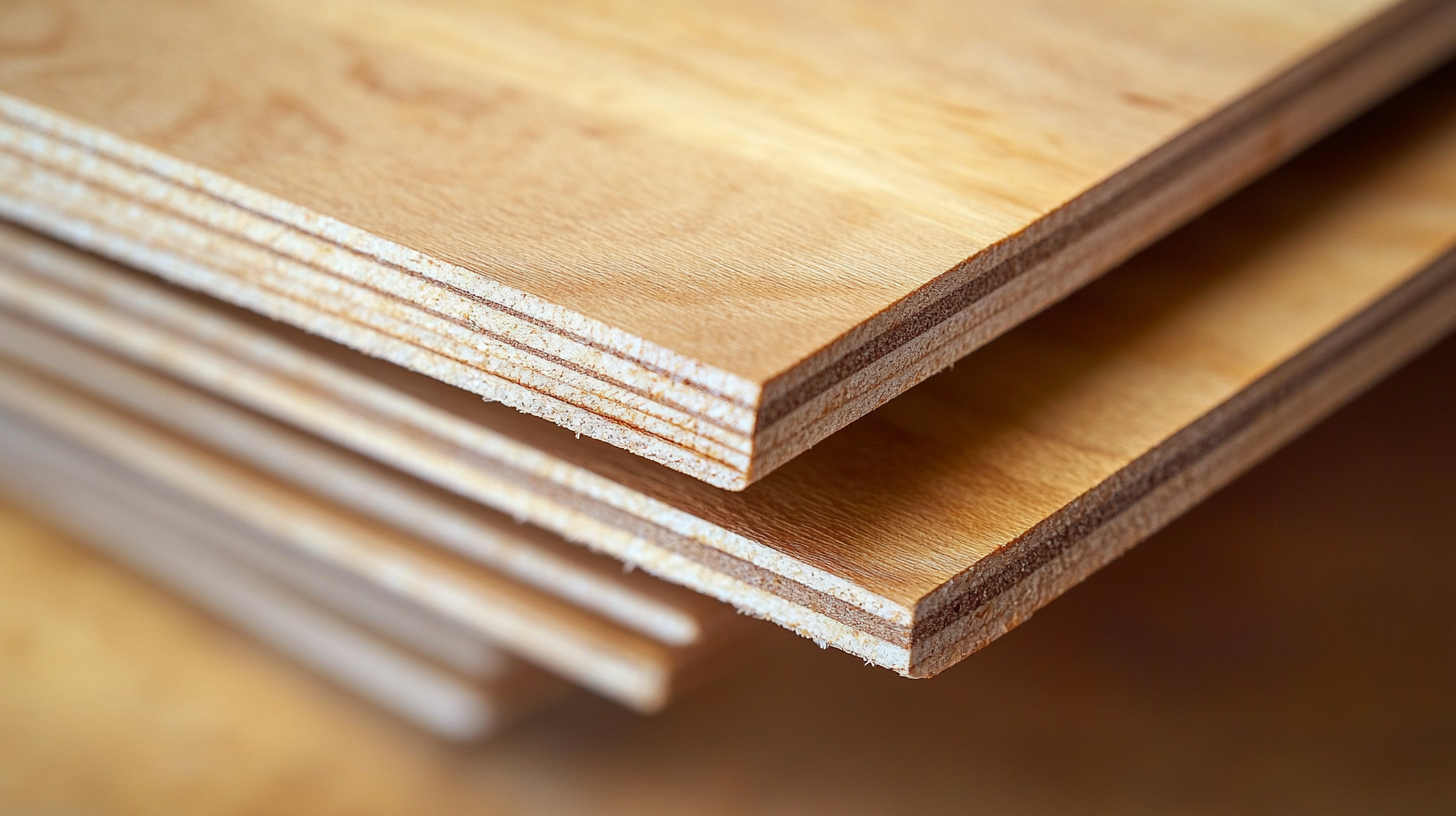As the demand for sustainable building materials continues to rise globally, China plywood is poised to play a crucial role in shaping the future of the construction and furniture industries. According to a report by Research and Markets, the global plywood market is expected to reach USD 78.8 billion by 2025, with China being a significant contributor due to its advanced manufacturing capabilities and abundant raw materials. However, amidst this growth, finding a reliable supplier becomes paramount for businesses looking to ensure quality and sustainability. This blog will serve as an ultimate guide to discovering high-quality China plywood suppliers, leveraging innovations in technology and industry standards that are redefining supply chain efficiencies. In doing so, we aim to equip you with the knowledge necessary to navigate the dynamic landscape of the plywood industry in the coming years.

As we look towards 2025, advanced manufacturing techniques are set to redefine plywood production in China. The integration of automation and robotics into the manufacturing process not only enhances efficiency but also ensures consistent quality in plywood output. These innovations enable manufacturers to meet the growing demand for sustainable building materials, thanks to improved precision and reduced waste in production.
Tips: To capitalize on these advancements, manufacturers should invest in training programs for workers to operate new machinery effectively. Embracing smart technologies, such as IoT for real-time monitoring, can help optimize production lines and reduce downtime. Furthermore, adopting environmentally friendly practices in alignment with advanced techniques will attract eco-conscious consumers.
Additionally, advancements in 3D printing technology are allowing for more complex designs and customizations in plywood products. This shift not only caters to diverse consumer needs but also opens new markets for builders looking for unique architectural solutions. Collaborating with tech startups could provide traditional plywood companies with innovative ways to enhance their product offerings and streamline operations.
Tips: Staying informed about emerging technologies in the market is crucial. Networking with industry experts at trade shows and forums can yield valuable insights into the future landscape of plywood manufacturing. Building partnerships with technology providers can also foster innovation, ensuring that companies remain competitive in a rapidly evolving industry.
In recent years, China's plywood industry has witnessed a transformative shift towards sustainability, with a vision aimed at 2025 and beyond. As environmental concerns intensify globally, Chinese manufacturers are increasingly adopting eco-friendly practices, focusing on sourcing timber from sustainably managed forests. This change not only addresses the demand for responsible forestry but also aligns with the global push for carbon reduction. Innovative methods, such as using recycled materials and low-VOC adhesives, are becoming standard in production processes, reducing the ecological footprint of plywood manufacturing.

Furthermore, advancements in technology are playing a crucial role in enhancing sustainability within the industry. Automation and AI-driven solutions are optimizing resource utilization, minimizing waste, and improving operational efficiency. Smart manufacturing techniques are enabling factories to monitor energy consumption in real-time, leading to significant reductions in carbon emissions. As China positions itself as a leader in sustainable plywood production by 2025, these innovations ensure that the industry not only meets market demands but also supports global environmental goals, paving the way for a greener future.
Innovative materials are transforming the plywood industry, significantly enhancing performance and sustainability. The introduction of engineered wood composites and hybrid materials allows for greater strength and durability while reducing the weight of plywood products. These advancements not only improve the structural integrity of plywood but also facilitate easier handling and installation, making them ideal for various applications, from construction to furniture design. By incorporating advanced polymers and binding agents, manufacturers can create plywood that withstands moisture, heat, and wear, extending its lifespan and reducing maintenance costs.

Additionally, the integration of eco-friendly materials is reshaping the environmental footprint of plywood production. Researchers are exploring the use of bio-based adhesives and reclaimed wood fibers, which not only decrease dependence on traditional resources but also promote recycling and sustainability. As consumers become more environmentally conscious, the shift towards these innovative materials is not just beneficial for performance but also aligns with a growing demand for greener building products. This evolution in the plywood industry illustrates how technology and sustainability can work hand in hand, paving the way for smarter and more responsible construction materials in the future.
The integration of smart technology in plywood design and production is set to revolutionize the industry, particularly by 2025. With advancements in IoT and AI, manufacturers are now able to create plywood products that are not only structurally sound but also capable of real-time monitoring and customization. According to a recent report, the smart wood products market is projected to reach USD 1.2 billion by 2025, driven by the demand for enhanced functionality and user interactivity.
At CES 2024, innovations such as the hidden automotive display highlight the trend towards seamless integration of technology in everyday products. Similarly, manufacturers in the plywood sector are beginning to adopt technologies that allow for digital interfaces embedded into wood surfaces, thereby offering consumers new levels of interaction. This shift marks a significant departure from traditional manufacturing processes and aligns with consumer expectations for smart, multifunctional products. As the plywood industry embraces this transformation, we can anticipate a future where design aesthetics and technological sophistication coexist, driving both efficiency and creativity in product development.
| Dimension | Description | Expected Impact by 2025 | Technology Integration |
|---|---|---|---|
| Sustainability | Incorporation of eco-friendly materials into plywood production. | Reduction in carbon footprint by 30%. | Use of AI in material selection. |
| Smart Manufacturing | Automation and robotic processes for precision in production. | Increase efficiency by 40% through reduced human error. | IoT integration for real-time monitoring. |
| Customization | Ability to design bespoke plywood products using online platforms. | Increased customer satisfaction rates by 50%. | 3D modeling and AR tools for offline and online interfaces. |
| Supply Chain Transparency | Enhanced tracking of raw materials and production processes. | Improved logistics efficiency by 25%. | Blockchain for quality assurance. |
| Digital Design | Software advancements for innovative plywood designs. | Faster prototyping with a reduction in lead time by 35%. | Cloud computing for collaborative design processes. |
As we look toward 2025, the plywood market in China is poised for significant transformation driven by changing consumer demands and industry innovations. With the rapid growth of the restaurant sector, estimated to reach a market scale of five trillion yuan, food service businesses will increasingly seek durable and stylish materials. Plywood, known for its versatility and aesthetic appeal, will play a crucial role in shaping restaurant interiors, meeting both functional and design requirements.
Furthermore, emerging market trends are likely to emphasize sustainability and eco-friendly practices, as consumers become more environmentally conscious. Plywood manufacturers will need to adapt by incorporating sustainable sourcing and production techniques into their operations. This shift not only aligns with consumer preferences but also positions the industry favorably in a competitive market that values innovative and responsible practices as vital to success in the future. As we anticipate 2025, the interplay of demand, innovation, and sustainability will undoubtedly redefine the landscape of plywood in China.
